Plant Health Care
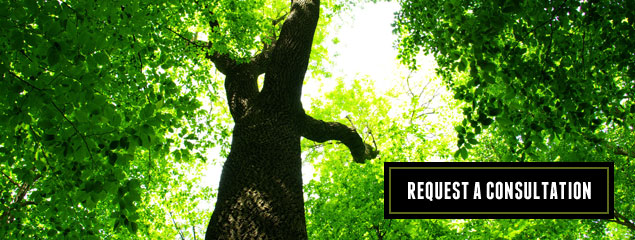
Diseases
A tree disease can be defined as an abnormal condition that affects a plants ability to properly function. Tree diseases are mainly caused by fungi; however, other organisms such as nematodes, bacteria, and viruses can also cause disease in trees.
Trees in urban environments provide many benefits to our communities. However, an urban setting isn’t always the most conducive environment for a tree to thrive due to factors like confined root space, salt, competition for water, compacted soil, and pollution to name a few.
These abiotic stresses can damage a tree by themselves or cause a tree to become more susceptible to a pathogen or pest. Its important to remember that many tree diseases cannot be cured after a tree has been infected. Therefore, trees must receive preventive treatments to ensure that they do not succumb to diseases. Once a tree has contracted a disease, management strategies can be aimed at reducing symptoms and prolonging the life of the tree.
Pests
At Forester Tree Service we take an Integrated Pest Management (IPM) approach to protect trees and shrubs on our clients’ properties. IPM is designed to make certain we achieve our goal of suppressing pest problems while minimizing negative environmental impacts.
&nsbp;
The abiotic stresses of living in urban environments can damage a tree independently or increase a tree’s susceptibility to pathogens and pest.
Unlike diseases, pests can be eradicated from a tree after they have taken residence. However, preventative measures are most effective. Furthermore, the earlier that steps are taken to treat an occupied tree, the higher likelihood that the tree will not suffer long-term consequences.
Treatment methods for both diseases and pests include:
– Spray Application
– Soil Application
– Trunk Injection
Urban Tree Decline
Cambistat
Cambistat is a growth regulator that allows a tree to redirect its energy from canopy growth to fibrous root growth by 40 to 60%, which enables root system enhancement, improved drought tolerance, and higher tolerance to stress and disease. This product is especially beneficial for newly transplanted trees as well as those that have been damaged or are in decline.
Cambistat is also beneficial for tree preservation during or after construction; it also aids in the root development of newly transplanted trees. Leaves of treated trees tend to be greener and have a thicker surface area than those left untreated. Clients can expect three years of benefits from one treatment of Cambistat.
Cambistat treatment for trees in mild decline.
Research has shown Cambistat increases fine root density.
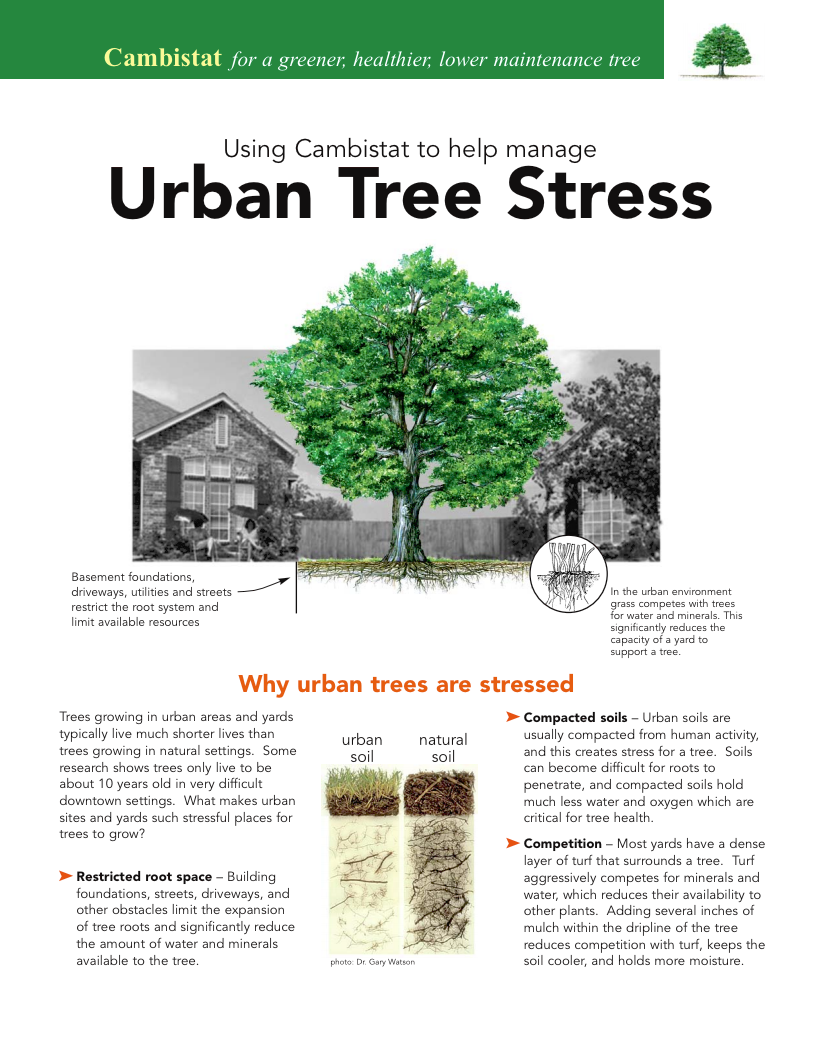
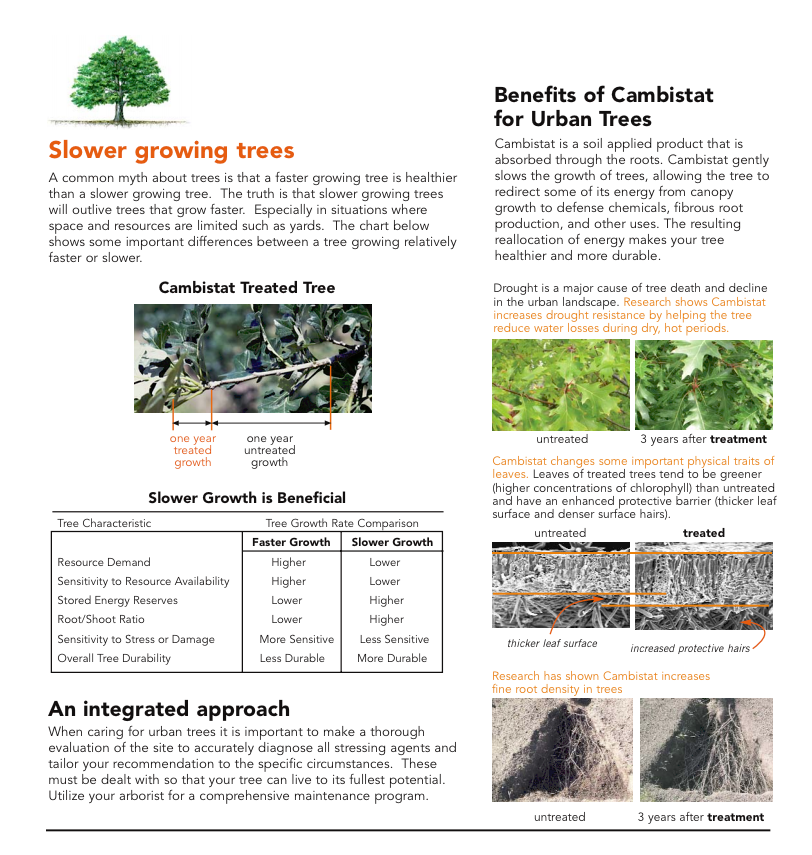
Deep Root Fertilization
In contrast to forest floors, trees in urban environments have limited root space, soil compaction, water and nutrient competition with turf, and deficiencies in organic matter due to removal of leaf litter. Urban settings also lack the diverse populations of microorganisms and other nutrients that forest floors produce.
We recommend an annual tree and shrub deep root fertilization with our slowly soluble, long residual, complete fertilizer with a low salt index. Spring/Fall Our specialized formulation is designed to help woody plants mitigate adverse environmental stresses, such as drought, salinity, and soil ph extremes.
We also add a product called Rhizo Fuel, which adds beneficial mycorrhizal fungi and bacteria that aid in fibrous root development and water and nutrient uptake through the formulation of increased root surface area. The beneficial fungi also release enzymes into the soil that dissolve hard to capture nutrients, such as phosphorous, iron and other “tightly” bound soil nutrients.
Deep root fertilization is a process where nutrient solution is injected into the root zone of trees. The solution is injected into the root zone under pressure which helps aerate the root system. The solution is injected just below the surface and goes to a depth of 12 – 14 inches. Soil injection sites are placed about 2 or 3 feet apart in a grid pattern throughout the canopy area and beyond the drip line. (See the diagram below.)
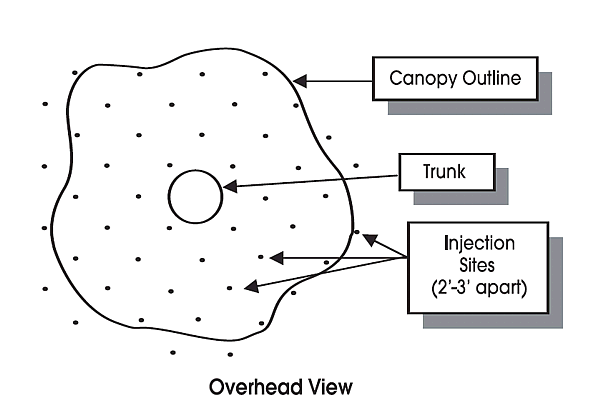
Our fertilization programs are performed in accordance with ANSI A300 Part 2 standards for tree fertilization
